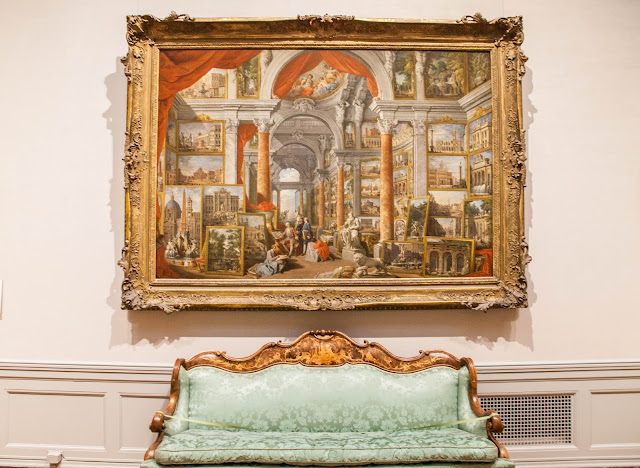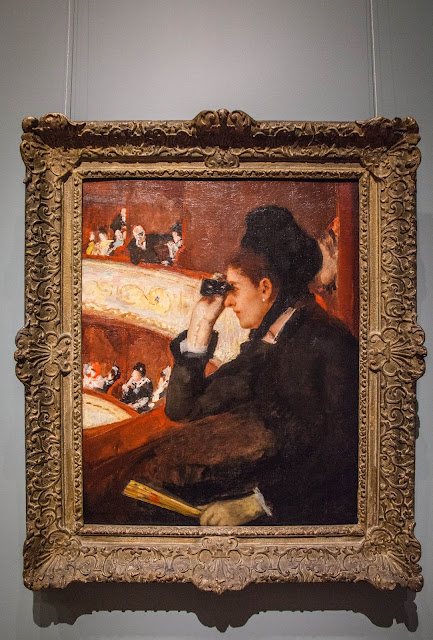After our visit at the Isabella Stewart Gardner Museum, we continued our museum tour with a visit to the Museum of Fine Arts Boston. The very first exhibit located next to ticket office was all about musical instruments. My Dad was super excited about it, so that is where we began our tour. It was a fascinating exhibit, with so many beautiful and interesting instruments.
There are musical instruments from around the world, ranging from ancient times to the late twentieth century. The Museum is home to over 1,100 instruments, including many European and American examples, as well as numerous pieces from Asia, the Middle East, Africa, and the Americas.
After the instruments, we toured through the mesmerizing jewelry displays.
Head of Madusa Pendant
Cartier
1906
Python Necklace
David Beilander (Swiss)
2011
Anodized Titanium
Amber Necklace, brooch, & earrings
Italian
19th Century
Cameo Necklace
French
About 1840
I always like to make a stop in the Dutch art galleries to look for any examples of nautilus cups and other fine curiosities of that sort. This museum had several stunning examples of exotic, natural objects, transformed into works of art.
Dutch still lives are another favorite of mine, I especially love all the symbolism they contain.
Dutch floral pieces are yet another favorite, basically most Dutch art is my favorite
Still Live with Roses in a Glass Vase
Ambrosius Bosschaert the Elder
1619
Oil on Copper
Ambrosius Bosschaert the Elder is one of the most well known Dutch floral still life artists from the 17th century, so it's always exciting when I get to see one of his works in person.
Picture Gallery with Views of Modern Rome
Giovanni Paolo Pannini
1757
Endlessly Repeating Twentieth Century Modernism
Josiah McElheny
2007
‘Endlessly Repeating Twentieth Century Modernism’ presents the viewer with a seemingly infinite repetition of reflections of modernist design (decanters, vases, boxes, and bottles based on designs from Scandinavia, Italy, the former Czechoslovakia, and Austria from c. 1910 -1990) that attempts to depict the capitalist notion that all objects are eternally repeatable, that everything can be remanufactured endlessly without regard to era, geography, or culture. McElheny has stated that he aims to explore how “the act of looking at a reflective object could be connected to the mental act of reflecting on an idea.”
The Salon
The Salon gallery takes its name from traditional public displays of sculptures and paintings tightly arranged along the walls in a cheek-by-jowl configuration beginning in the Italian Renaissance and extending through the early years of the MFA, as depicted in Enrico Meneghelli’s The Picture Gallery in the Old Museum (1879). From the first American painting acquired by the MFA, Washington Allston’s Elijah in the Desert (1818), to marble sculpture by Americans working in Italy, the Salon gallery reflects the impact of travel and study abroad for a range of 19th-century American artists. Among them are, in Italy, Thomas Cole and William Wetmore Story; in France, William Morris Hunt, an influential teacher and tastemaker who introduced the Barbizon school of French painting to the United States; in Germany, Albert Bierstadt, who honed landscape techniques later applied to scenes of the American West; and, in the British Isles, Robert S. Duncanson, who executed an atmospheric coastal view of the northern landscape in Dog’s Head of Scotland (1870).
Beyond Europe, the Salon gallery features a selection of paintings of Niagara Falls, the most frequently depicted landscape of the 19th century and a popular symbol of the North American wilderness. Several generations of American artists painted there, including Samuel Finley Breese Morse, John Frederick Kensett, Jasper Francis Cropsey, and George Inness.
We always spend a considerable amount of time in the impressionists galleries, since impressionism is a favorite for all three of us.
Camille Monet and a Child in the Artist's Garden in Argenteuil
1875
The Tea
Mary Stevenson Cassatt
about 1880
In the Loge
Mary Stevenson Cassatt
1878
In the Loge was the first of Cassatt’s Impressionist paintings to be displayed in the United States. When it was shown in Boston in 1878, critics described the picture as “striking,” adding that Cassatt’s painting “surpassed the strength of most men.” Unlike her friend, Edgar Degas, Cassatt focused on the spectators rather than the performers. This piece explores the act of looking.
Caresse Maternelle
Mary Stevenson Cassatt
about 1902
Mother and Child in a Boat
Edmund Tarbell
1892




















































No comments:
Post a Comment